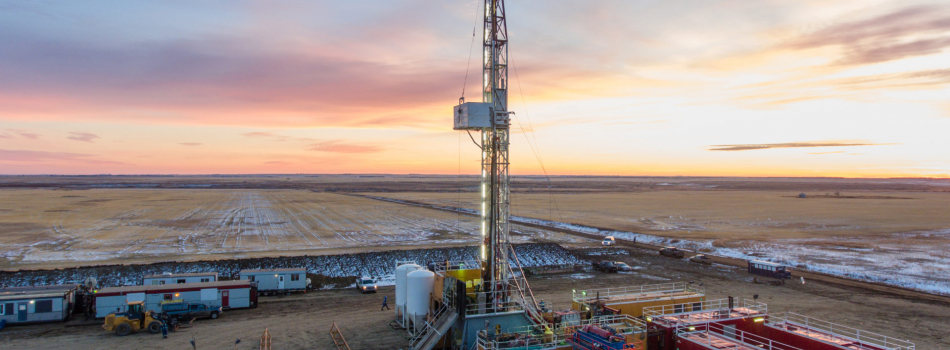
Author’s note: Until this past February, I worked as a contracted television producer for Global TV and its current affairs program,16×9. Last fall, I was commissioned to do a story for the program about the Koch brothers, their holdings in Alberta’s oil sands and their interest in getting the Keystone XL pipeline built. In January, two days before the 22-minute documentary was about to air on16×9, Global’s senior management pulled the story. After Jesse Brown’s Canadaland published a story about its sudden disappearance, Global fired me, although I was not quoted in that story or had any involvement with it. What you’re about to read includes some of the material that has not yet been permitted to be shown on Global.
The attacks were nasty.
In the winter of 2011, Karen Kleiss, a reporter with the Edmonton Journal, wrote a story about how Koch Industries Inc. had hired a lobbyist in Alberta. The story provided background on the Wichita, Kansas-based energy conglomerate, its presence in Alberta, and its American billionaire owners, Charles and David Koch.
Kleiss reported at the time that no one from Koch Industries addressed her questions. Nevertheless, after her story appeared, Koch Industries went on the offensive. On their website, kochfacts.com – and in vivid red type – they lashed out at Kleiss’s article, claiming it was “slanted,” that it “parroted partisan political rhetoric and other distortions” and that its coverage of the Koch brothers registering a lobbyist in Alberta was a “purported story.” The Koch Industries representative summed up by saying:
“There is a place for opinion on the op-ed pages, on blogs, and on Twitter. It does not belong on the news pages of an objective journal.”
What the paragraph-by-paragraph rebuttal did not dispute was Kleiss’s assertion that Koch industries is “an American energy conglomerate owned by two powerful billionaire brothers who help fund the Tea Party and climate change denial movements in the U.S.”
The attack was so strong that Lucinda Chodan, editor-in-chief of the Journal at the time, felt compelled to write a lengthy response to Koch defending her reporter’s work. The company replied by taking further potshots at the newspaper and at Kleiss’s judgment.
Around the same time, a similar scenario was playing out after Reuters ran a story entitled “Koch Brothers Positioned To Be Big Winners If Keystone XL Pipeline Is Approved,” that also detailed Koch’s holdings in Canada. It discussed how the Koch brothers would benefit if the Keystone XL pipeline was built.
Written by David Sassoon, a journalist who runs InsideClimate News— a Brooklyn, NY-based, Pulitzer prize-winning website that covers climate change issues— the Reuters piece eventually elicited a ferocious response from Koch’s PR department. The company accused Sassoon of publishing “falsehoods” and of being an “environmental activist,” and Reuters of printing “advocacy journalism.”
Koch Industries even took out ads via Facebook and Google with a photo of Sassoon under the headline “David Sassoon’s Deceptions.”
Once again, a Reuters editor had to intervene with a lengthy letter to Koch defending their use of Sassoon’s reporting. These attacks went on for some months. Today, Kleiss and Sassoon refuse to discuss these events.
But at that time Koch Industries’ campaigns against the media were not unusual. Their website, KochFacts, criticized reporting in The New York Times, The New Yorker, Mother Jones, Forbes.com, The Washington Post and Bloomberg’s Markets Magazine.
By 2011, the Koch brothers – currently the sixth richest people in the world, with US$42.3-billion apiece – were attracting attention because of their efforts at influencing the US political system, helping foster the Tea Party movement, and attacking attempts to curb climate change. They were also emerging as political kingmakers: two weeks ago, the brothers were in the news for endorsing Scott Walker, the governor of Wisconsin, as their choice for the Republican presidential nominee (Walker is well-known for his attacks on labour rights in his state).
Tax records show that since 2007 the Fraser Institute, one of Canada’s oldest conservative think tanks, has pocketed a total of US$765,000 from one of Charles Koch’s foundations.
Koch Industries, the second-largest private company in the US, has become infamous for playing hardball.
Yet the broadsides on articles linking the Koch brothers to Canada might have had another purpose: to direct prying eyes away from their company’s history in this country. After all, few people know how Canada and its oil riches have been central to creating their vast fortune.
And what a fortune it is: today, Koch Industries is a global behemoth with annual sales of US$115-billion and a presence in 60 countries and employing more than 100,000 people worldwide. It has invested US$70-billion in capital expenditures over the past 12 years. They produce a wide range of products, and not only from the 750,000 barrels of oil they process every day: fertilizers, drywall, windowpanes, carpets, Brawny paper towels, Dixie cups, chemicals, and fibre optics.
As it turns out, Koch Industries also controls anywhere from 1.1 million to as much as two million acres of Alberta’s oil sands – or the equivalent of around 4,500 square kilometers – thereby guaranteeing the company’s prosperity for decades to come. The value of their oil sands holdings is in the tens of billions of dollars. MORE
RELATED:
Koch brothers go deep in Alberta tar sands
Few people know how central this country’s oil riches have been to the U.S. Big Oil billionaires’ vast fortune. Most of their tar sands holdings remain untouched, but that may soon change.









 Declare yourself as an Earth Protector
Declare yourself as an Earth Protector 